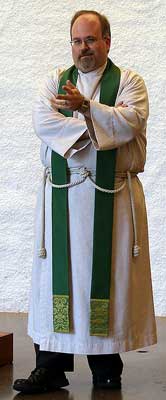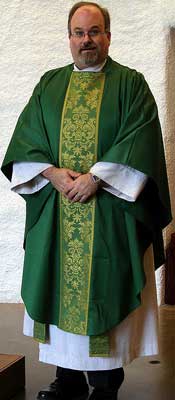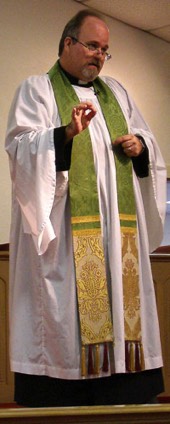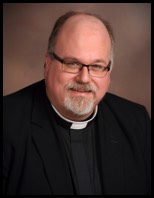Why Vestments?
By: Dr. Gregory S. Neal

The need for formal worship vestments is not exclusive to the clergy. All members of the family of God are called to be involved in leading the public worship of God. When laity participate in worship leadership it is entirely appropriate for them to vest as a member of the baptized “Priesthood of All Believers.” The symbolism here is important: when anyone, lay or clergy, steps into worship leadership, they are not doing so by virtue of their own personhood. They are, instead, leading worship in a reprehensive role: laity by virtue of their baptisms into the Body of Christ, and clergy by virtue of their ordinations to the Teaching, Prophetic, and Eucharistic ministries of the Church. I take seriously the calling of the laity to be actively involved in worship leadership; when laity do this, it is entirely appropriate for them to vest in the garments of our common ministry – the Priesthood of all Believers – and this garment has been, for almost 2000 years, the alb.


There are other vestments that Elders and Deacons may wear when the sacraments are being celebrated – principle among these is the Causable. Even though the Chasuble is impressive, it’s always worn with a stole (either under it or overlaying it) because it is the stole that is the symbol of the order and office of Elder. Indeed, rarely will I ever lead worship and preach in the church when I’m not wearing at least a stole. The other garments can and do change – I often wear the preaching robe, which is a symbol not of ordained ministry but of educational attainment, the cassock (which is a black alb), the surplice (which is sort of a free-flowing alb), and the Chimere (which is a “preaching gown” worn over a surplice) – but the fundamental garment that I prefer to wear in worship leadership is the same garment I would wear if I were laity – the alb. In many ways, by wearing it I am highlighting, in symbolic terms, the fundamental unity between myself and any other member of the congregation: we share the same baptism.
© 2011 Dr. Gregory S. Neal
All Rights Reserved

The Reverend Dr. Gregory S. Neal is the Senior Pastor of Grace United Methodist Church in Des Moines, Iowa, and an ordained Elder of the Iowa Conference of The United Methodist Church. A graduate of Southern Methodist University, Duke University, and Trinity College, Dr. Neal is a scholar of Systematic Theology, New Testament origins, and Biblical Languages. His areas of specialization include the theology of the sacraments, in which he did his doctoral dissertation, and the formation and early transmission of the New Testament. Trained as a Christian educator, he has taught classes in these and related fields while also serving for more than 35 years as the pastor of United Methodist churches in North Carolina, North Texas, and Iowa. He is married to Kade Rogers.
As a popular teacher, preacher, and retreat leader, Dr. Neal is known for his ability to translate complex theological concepts into common, everyday terms. His preaching and teaching ministry is in demand around the world, and he is available for public engagements. He is the author of several books, including Grace Upon Grace: Sacramental Theology and the Christian Life, which is in its second edition, and Seeking the Shepherd's Arms: Reflections from the Pastoral Side of Life, a work of devotional literature. Both of these books are currently available from many book stores, including Cokesbury, Barnes And Noble, and Amazon.
As a popular teacher, preacher, and retreat leader, Dr. Neal is known for his ability to translate complex theological concepts into common, everyday terms. His preaching and teaching ministry is in demand around the world, and he is available for public engagements. He is the author of several books, including Grace Upon Grace: Sacramental Theology and the Christian Life, which is in its second edition, and Seeking the Shepherd's Arms: Reflections from the Pastoral Side of Life, a work of devotional literature. Both of these books are currently available from many book stores, including Cokesbury, Barnes And Noble, and Amazon.